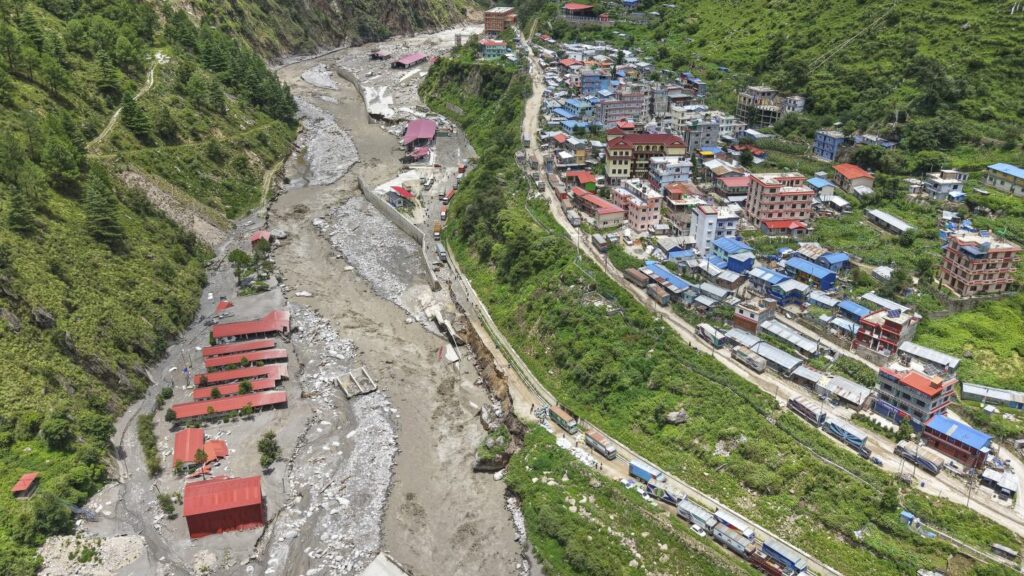A recent flood in Nepal caused significant damage to infrastructure, including a vital hydroelectric dam and the main bridge connecting Nepal to China, resulting in the deaths of nine people. Experts link the increased frequency of such disasters to climate change, highlighting the region’s particular vulnerability to extreme weather.
The flooding damaged ten hydroelectric facilities, disrupting power for approximately 600,000 homes in South Asia, and led to long-term economic concerns for local communities that depend on cross-border trade. The Sino-Nepal Friendship Bridge, previously rebuilt after the 2015 earthquake, now faces scrutiny over its vulnerability to future flooding, prompting calls for smarter reconstruction plans that account for climate risks.
Officials are urged to implement comprehensive risk assessments before rebuilding, focusing on creating climate-resilient infrastructure. The article underscores the need for significant investment in adaptation strategies to mitigate future disaster impacts, especially as climate-driven disasters lead to substantial financial losses in the region. The global community’s response includes initiatives like the Climate Loss and Damage Fund, but experts stress that more needs to be done for sustainable infrastructure development.
Source link


